Football: How Alice Street in Swansea gave Wales five internationals
- Published
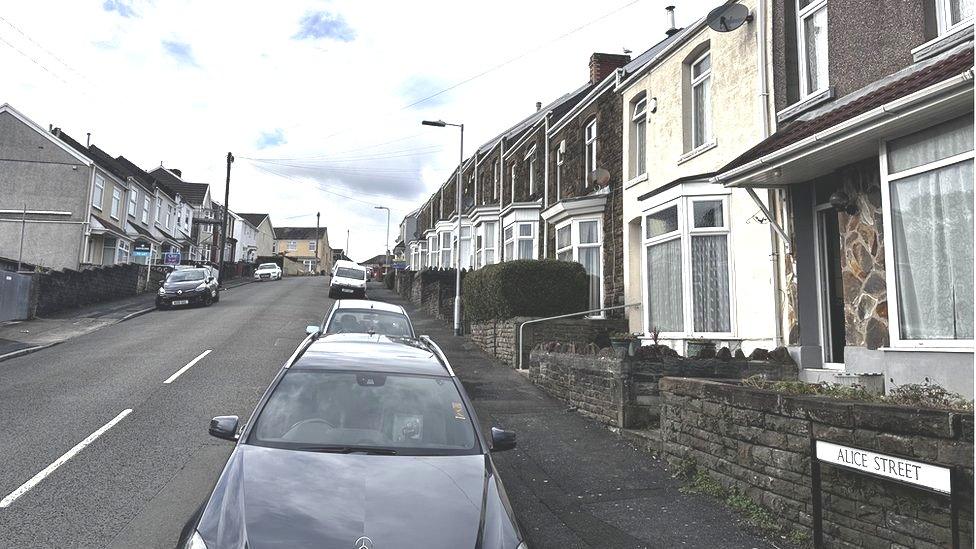
Welcome to Welsh football Wonderland - Alice Street in Cwmbwrla, Swansea
Alice Street is a friendly, working class collection of terraced houses, otherwise unremarkable in every respect - bar one.
Over a 13-year period in the middle of the 20th Century, this single street in the Cwmbwrla district of Swansea produced five Welsh international footballers, including the Charles brothers, John and Mel.
It is surely one of the few examples in world football of such a small area rearing so many internationals.
Now their story has been told in Wonderland, a documentary produced by Swansea University's Taliesin Arts Centre.
The film's writer, Welsh football historian David Brayley, put the achievement into context.
"Over a century and a half of international football, Newcastle has produced 15 players, Bristol and Stoke 12 each, Southampton nine, but this one road in Swansea gave us five on their own," he said.

Jackie Roberts, from 9 Alice Street, shakes hands with Field Marshal Montgomery at Burnden Park, Bolton Wanderers' home
Producer Amina Abu-Shahba freely admits that before Wonderland was commissioned she had little to no interest in football, but now she is hooked.
"I was actually working on another documentary about Swansea when I was introduced to David, and in one afternoon he'd sold me on the tale of the Alice Street gang," she said.
"I'm not really a fan, but I am absolutely fascinated by the circumstances of social history which all had to coalesce in order for these five boys to succeed so brilliantly."
She likened it to the coincidence of chemistry, climate and environment, which allowed the creation of life on earth.
"If you were going to create a lab experiment, a petri dish with the perfect conditions to spawn footballers, you couldn't come up with anything better than Alice Street," she added.
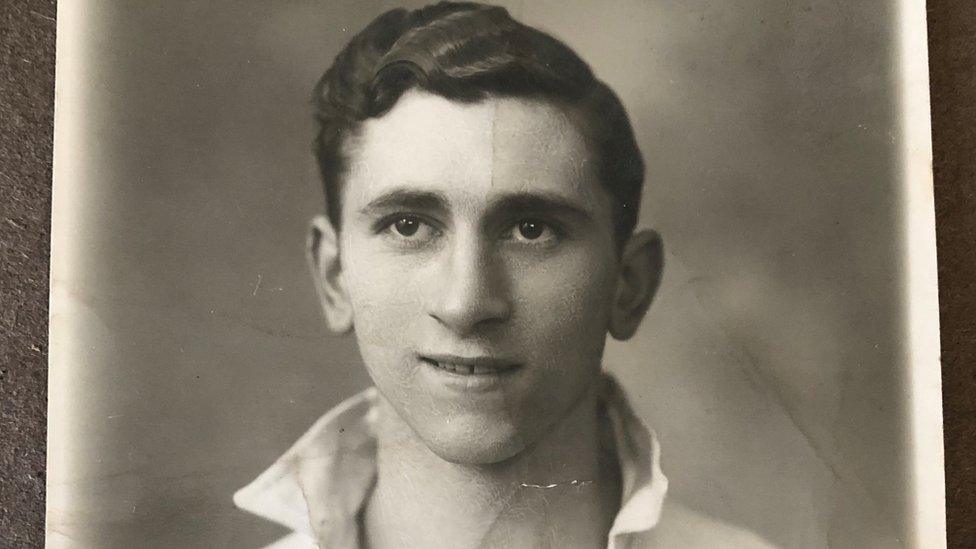
Ernie Jones, from 10 Alice Street, won four caps, and his clubs included Swansea, Spurs and Southampton
"As Professor Martin Johnes says in the film, it was the poverty and work ethic of an industrial area, the fact that the whole community had to rely on and support each other to get by, the move to half-day working on a Saturday, and then chuck in some truly dedicated teachers and coaches who showed complete faith in these lads."
The story began with full-back Jackie Roberts and winger Ernie Jones.
Roberts lived at 9 Alice Street, while Jones was at number 10.
Roberts earned one cap for Wales, and played for the likes of Bolton Wanderers and Swansea - who were then Town, rather than City.
Jones earned four caps for his country, and played for Tottenham Hotspur, Southampton and Swansea, among others.
Ms Abu-Shahba said: "Jackie and Ernie didn't reach quite the same heights as some of the Alice Street gang, but they were trailblazers.
"Not only were they an inspiration to John and Mel Charles, and Mel Nurse, they remained firmly rooted in the Cwmbwrla area all their lives, and offered real practical support.
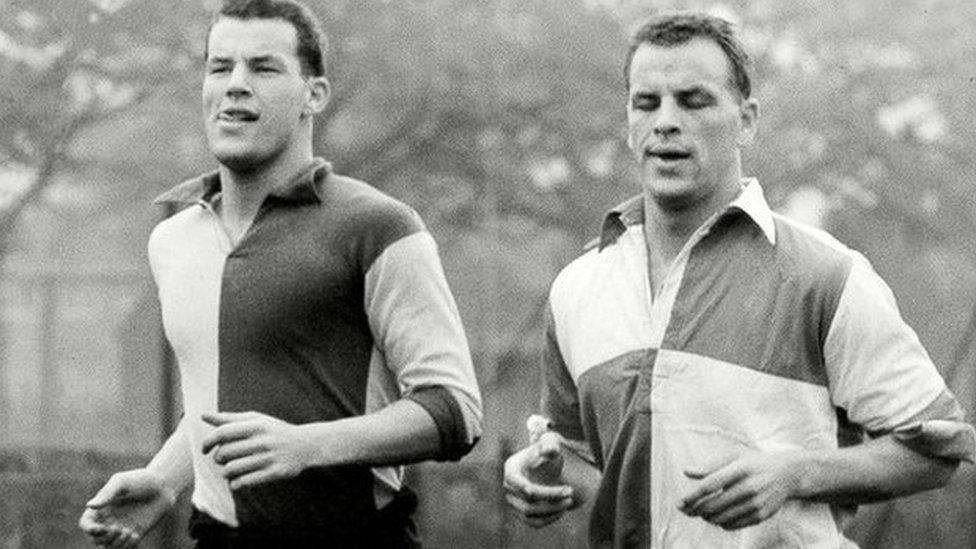
The Charles brothers from 6 Alice Street: Mel (left) and John both played for Wales at the 1958 World Cup
"As the saying goes, 'if you can't see it, you can't be it'," she added.
Mr Brayley cautioned against reading too much into Jackie and Ernie's seemingly more modest records.
"They may not look impressive on paper, but you have to remember that their careers were blown apart by World War Two, both served in the Army during what should have been their best years in the game.
"Jackie was injured in Italy, so when he finally earnt his only cap, he was actually blind in one eye."
The younger three of the Alice Street gang perhaps require less introduction.
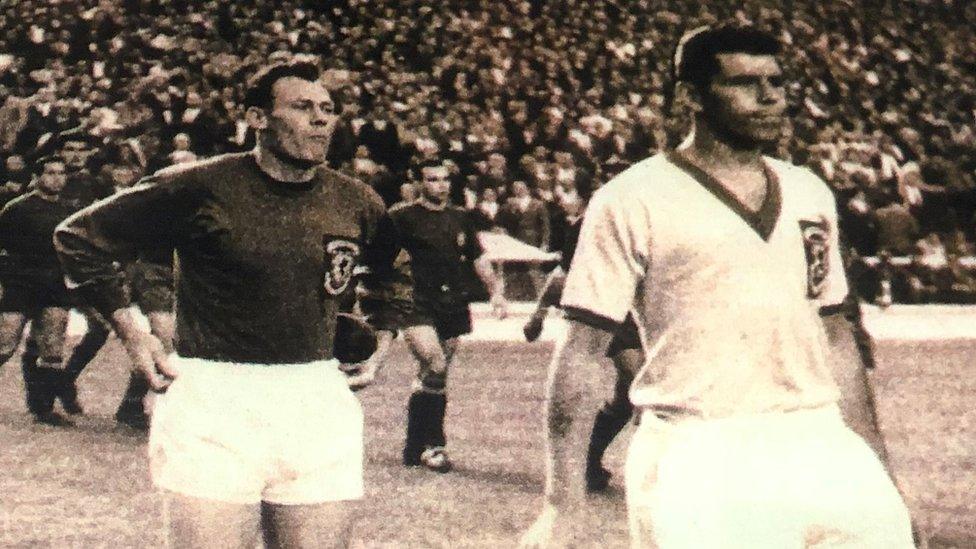
Mel Nurse at the front in a World Cup qualifier against Spain in Madrid in 1961
The Charles brothers, John and Mel, who lived at 6 Alice Street, both played in the 1958 World Cup in Sweden, which was then the only time Wales had qualified for a major tournament.
John earned 38 caps, scoring 15 goals, and played for the likes of Juventus, Leeds United and Roma. Mel earned 31 caps, scored six goals, and played for Arsenal, Swansea and Cardiff City.
John scored a vital goal against Hungary in the World Cup to help his team out of their group, but he was kicked about so badly in that game that he missed the quarter-final against Brazil.
Mel played centre-half in the match, and although a 17-year-old Pele scored the eventual winner, he described him as the best defender at the competition.
Neither brother was ever booked or sent off throughout their careers.
Mr Brayley said: "What can you say about John? He was the best player Swansea Town never had.
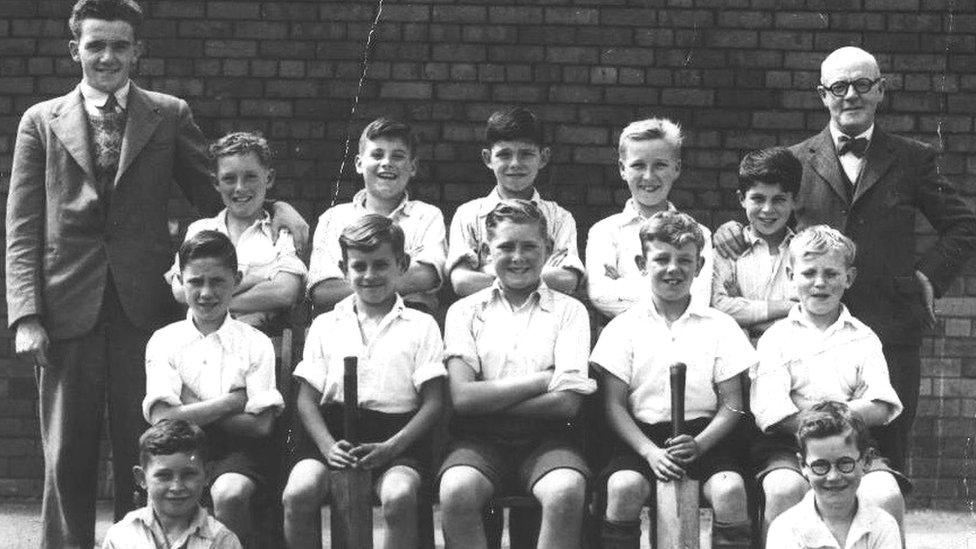
Not just football for Mel Nurse, who's in the centre, back row, of the Cwmbwrla Junior School cricket team
"They had him there as a schoolboy, but they didn't want to take a risk on youngsters, so Leeds nipped in and stole him from under Swansea's nose."
He said initially John was reluctant to leave Alice Street.
"I've read that Mrs Charles poured cold water on the move at first, saying 'he can't go to Leeds, he hasn't got a passport'," he added.
"But boy, did he flourish once he left - 370 career goals at a ratio of better than one in two matches, and was voted Juventus's best ever foreigner by their notoriously hard-to-please fans."
Mr Brayley believes if it had not been for John, Mel would have gone down in history as Wales' greatest player of the era.
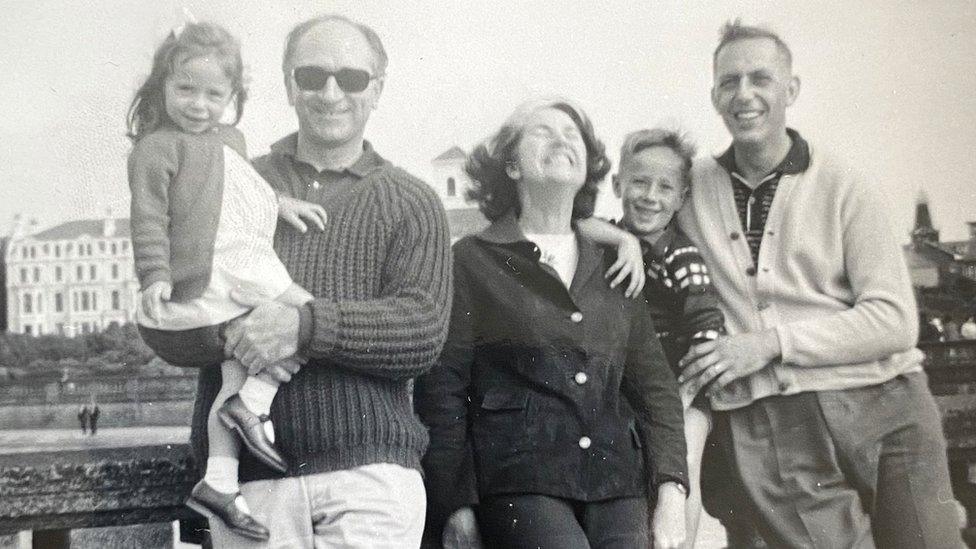
Ernie Jones on the left of this family photo, with Mark Baker, who also played for Swansea, on the right
He said: "People forget that after John, Mel was the most expensive transfer at the time he moved to Arsenal.
"He had it all - pace, power, vision, finishing, but as anyone with a big brother will tell you, it's a tough act to live up to."
The final member of the Alice Street quintet is Mel Nurse, known affectionately around the city as Mr Swansea.
He won 12 caps for his country, and played for the likes of Swansea and Middlesbrough.
Mr Brayley said he was equally as famous for what he did after football.
"Don't get me wrong, Mel Nurse was an outstanding player, and was a little bit unlucky to be just a tiny bit young to have gone to the World Cup," he added.
"But the reason he is so loved here is because he not only once, but twice stepped up to save the Swans when they were on the brink of bankruptcy.
"In 2001, he re-mortgaged all his businesses to underwrite the club's debts, and look where that led to a decade later."
In 2011, Swansea City were promoted to the Premier League, where they spent seven seasons.
Mr Brayley said that in many ways the personalities of the Charles brothers and Nurse were reflected in the way they played.
"John was quiet but strong and dependable, Mel Charles was a bit more gregarious and a flare man, and Mel Nurse was the practical one who got on with whatever needed doing," he said.
Wonderland is available to watch on YouTube.

HOLLYWOOD OR BUST: How Wrexham AFC became a global sensation
ACID DREAM: How a Welsh farmhouse sparked a revolution of the mind

Related topics
- Attribution
- Published15 November 2022

- Attribution
- Published31 May 2011